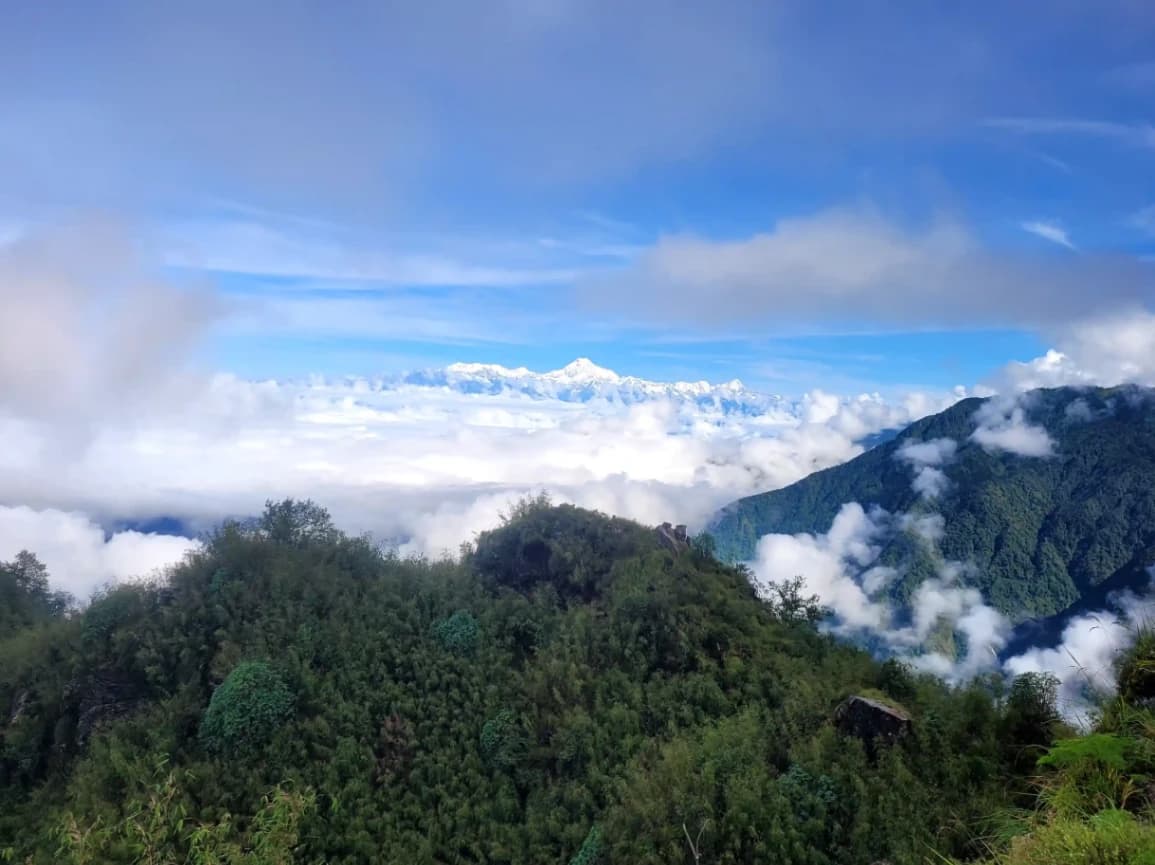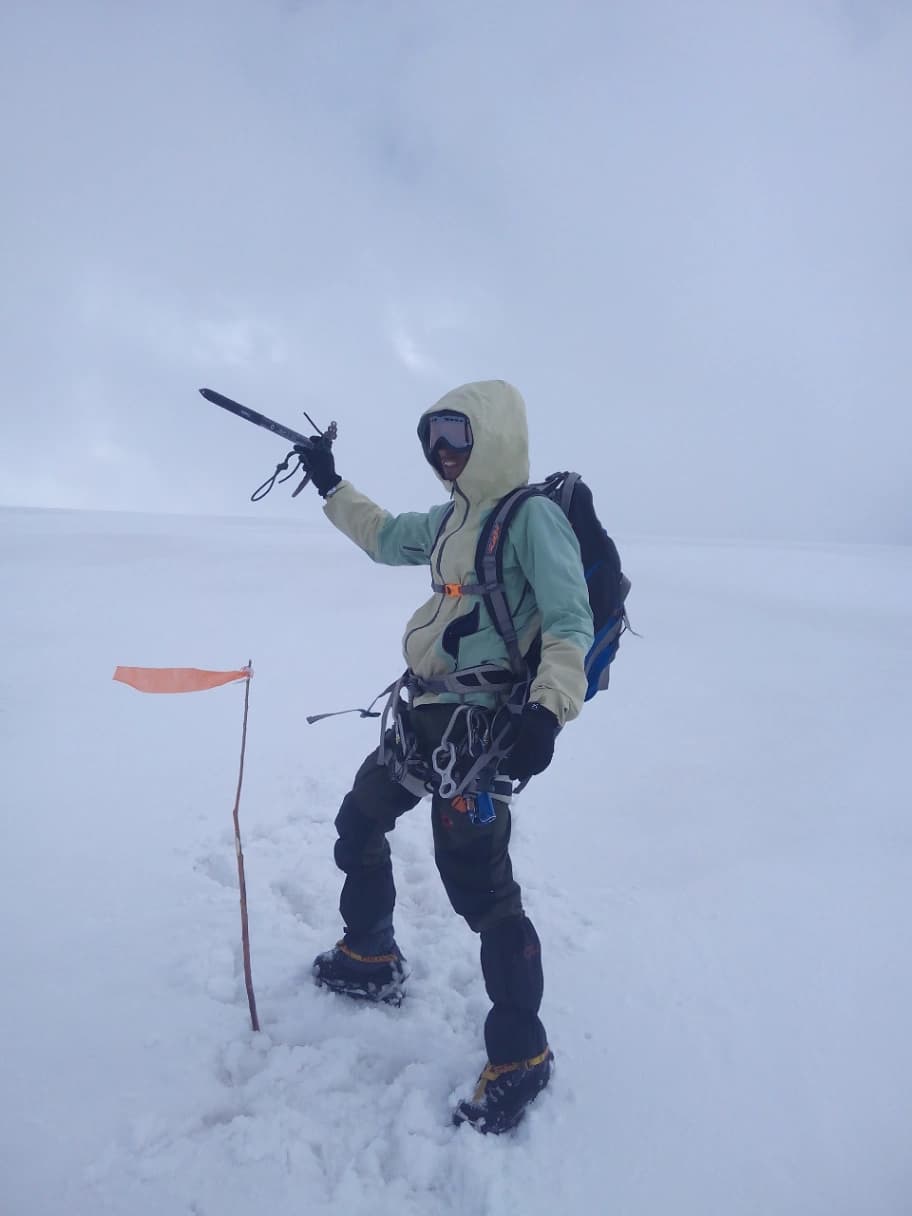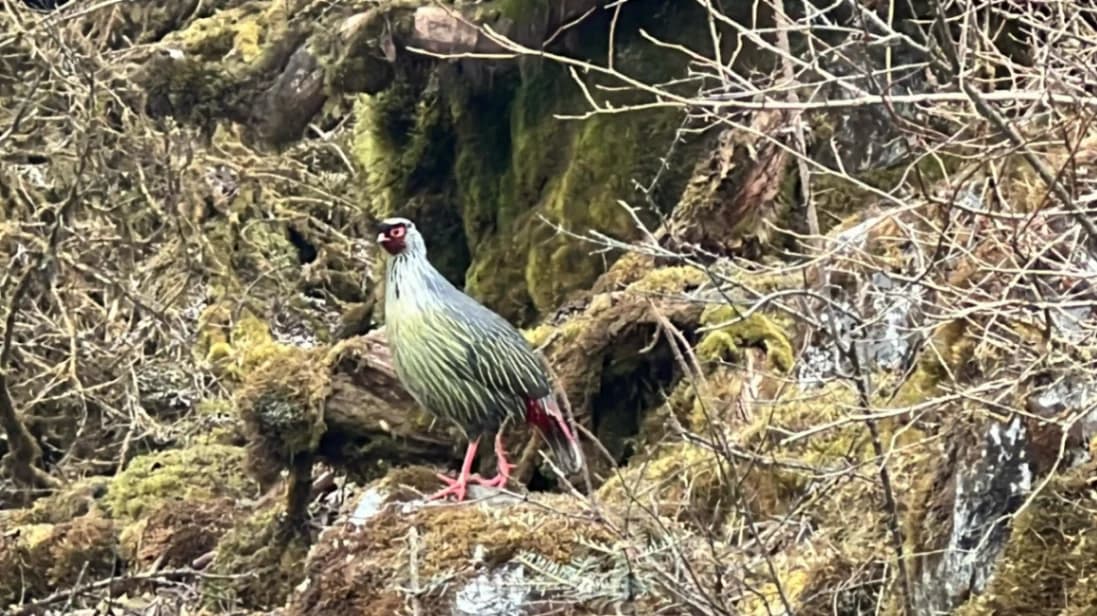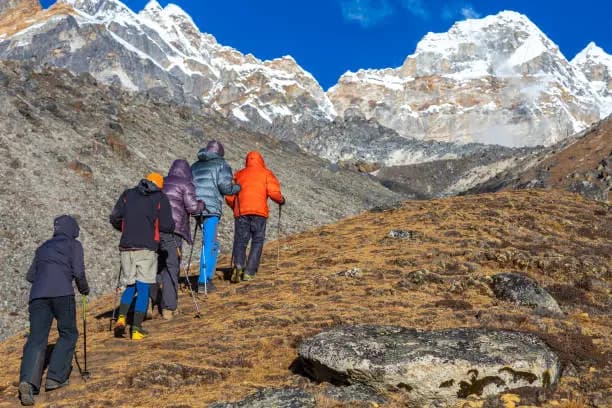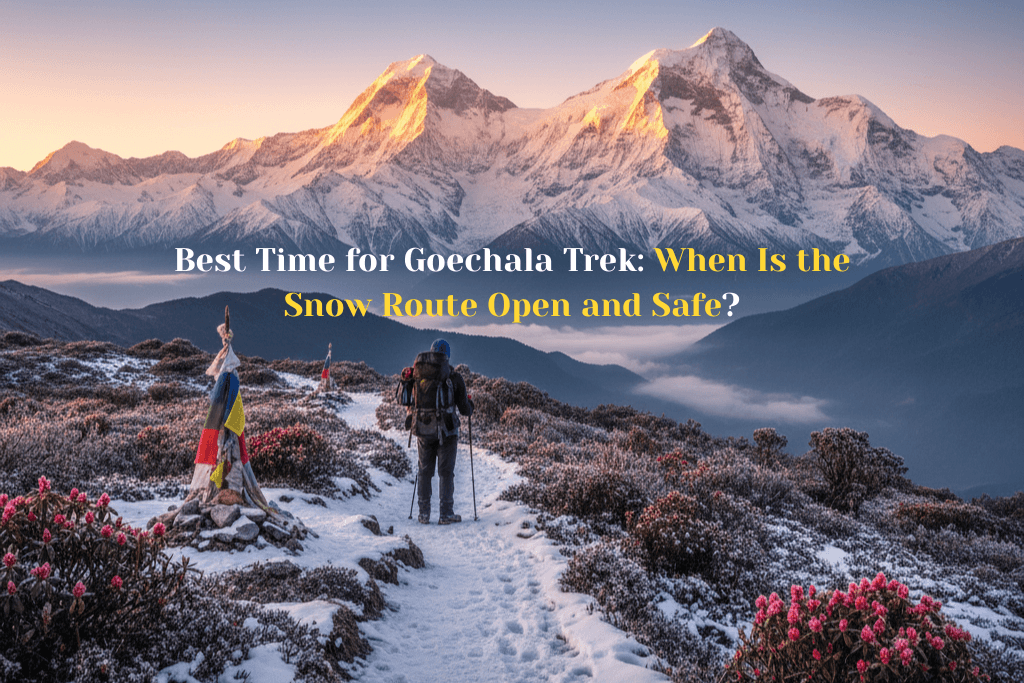Sandakphu trek presents itself as an exciting trip to one of the Eastern Himalayas’ highest points, with breathtaking vistas and an experience you will never forget, for trekkers and people who appreciate nature as much as you do. Sandakphu, at an altitude of 3,636 meters (11,929 feet), is West Bengal’s highest point and is simply called the “Roof of West Bengal” because of its status. The Sandakphu trek is an offer to see some of the most breathtaking mountain terrain, with stunning vistas of Mount Everest, Kanchenjunga, Makalu, and Lhotse. If you are a seasoned trekker or just a weekend adventurer, the Sandakphu trek will be an experience you will never look back upon.
The Allure of Sandakphu: A Trekker’s Paradise
It is not only a physical challenge that lies ahead but a sensory experience of different terrains, stunning forests, villages, and breathtaking mountain sceneries. From the tiny village of Maneybhanjang, 90 kilometers from Darjeeling, the trek goes through the Singalila National Park. It is a rich biodiversity region, this park, and is harbored by endangered species such as the red panda, black Himalayan bear, and pheasants, and hence, the trek is as much for wildlife and nature as for seeing the Himalayan summits.
The Sandakphu trek is of a moderate grade, meaning that, while there is no technical climbing involved, those who do it will have to be ready for several hours of hiking over hilly, rocky, and slippery terrain. The total distance traveled during the trek is circa 50 kilometers (31 miles), typically spread out during 4 to 6 days. While hiking at this altitude, trekkers will be greeted by stunning vistas of snow-covered mountains, meadows of wildflowers, and dense forests with rhododendron, magnolias, and various mountain vegetation.
Trekking Route and Itinerary: Day-by-Day Guide
Day 1: Manebhanjan to Tonglu (3,063 meters / 10,050 feet)
The journey officially starts at Manebhanjan, which is reachable by car via Darjeeling or Siliguri. It is a small hill station and the entry point to the trek, and from there, the path ascends quietly towards Tonglu, a quaint village with lovely meadows and forests around it. The 12-kilometer, relatively smooth ascent to Tonglu provides a gentle introduction to the trek, which takes around 5-6 hours. Trekkers cross through beautiful landscapes with occasional glimpses of Peaks through the clouds during the journey.
Day 2: Tonglu to Sandakphu (3,636 meters / 11,929 feet)
Day two involves a journey to Sandakphu, which is the highest point of this trip. It is a day of about 21 kilometers (13 miles), and it is a steadily upward climb with marvelous vistas of the Himalayan range. Rising up, you catch glimpses of Everest and Kanchenjunga, which soon reveal themselves to you fully. It’s around 7 to 8 hours to Sandakphu, and trekkers will be accommodated at a GTA (Gorkhaland Territorial Administration) Trekkers Hut, which is a humble but comfortable abode with a good view of the mountains.
Day 3: Exploring Sandakphu and Optional Phalut Extension
Day 3 provides an option to rest or to push out to Phalut, an even higher point along the Singalila Ridge. The Sandakphu Phalut trek is an added 21 kilometers and brings an added challenge and beauty. Phalut, at 3,600 meters, affords some of the best wide-angle vistas of the entire trek, including clear visibility of the Sleeping Buddha, a group of summits including Everest, Lhotse, Makalu, and Kanchenjunga. Those staying at Sandakphu can go for a day trip to nearby viewpoints to get great shots of the high Himalayas.
Day 4: Return Trek to Maneybhanjan
After relishing the vistas at Sandakphu, the journey back to Manebhanjan starts. The Sandakphu to Rimbik (or Srikhola, based on your itinerary) is generally a downward journey, giving trekkers an opportunity to cover ground faster than during the first two days. It will take you 6-7 hours to reach the point where the vehicle will pick you and return you to Darjeeling or Siliguri.
Accommodation: Simple Yet Comfortable
Being a far-off place, basic but operational accommodations are available. Simple, no-frills accommodations with shared dormitories are available at Sandakphu and other stops along the trail through the trekkers’ huts. Though lacking modern conveniences, these huts are adequate for the trekkers who just need a place to rest for a night after a day’s hard trek.
There are also guesthouses and homestays at locations like Tonglu and Kalipokhri, where trekkers can eat locally, sleep in comfortable rooms, and get to mingle with locals. In Sandakphu, there is an added choice of staying at a Forest Rest House, a state-run establishment that offers simple facilities for trekkers.
Meals at these establishments are usually simple and wholesome, with dal, rice, and vegetables being staple fares. The majority of establishments include tea, coffee, and snacks to keep trekkers going through the day.
Flora and Fauna: A Biodiversity Haven
Singalila National Park, which is crossed during Sandakphu trek, supports rich vegetation and wildlife. The area is particularly renowned for its rhododendron trees, which flower during spring, filling these hills with a kaleidoscope of flowers. Accompanying rhododendrons, there are magnolia, primula, and orchids, as well as many wildflowers.
Trekkers may also spot animals such as the red panda, Himalayan black bear, and Himalayan tahr. There are a number of bird species found there, including satyr tragopan, a pheasant species, and the Himalayan griffon vulture. Bird watching is a huge component of the trek, and people enjoy seeing these wonderful animals as they make their way along the trail.
Best Time to Trek Sandakphu
The ideal time to undertake the Sandakphu trek is between spring (March to May) and autumn (September to November). These seasons have stable weather with clear skies and fine temperatures, which offers the most suitable conditions for trekking and viewing mountains.
-
The spring season brings colorful flowers to the forests, as magnolias and rhododendrons bloom, providing trekkers with a feast to see. The weather is pleasant, and the vistas of the high ranges are mostly clear.
-
Autumn offers clear weather and cool breezes, and hence, it is the most favored season for trekkers. Often, visibility of the Himalayan summits is at its optimum, and conditions are ideal for extended days of trekking.
It’s not wise to go trekking between June and August since heavy rainfall leads to landslides, and roads and paths become slippery and dangerous. The winter months of December, January, and February can be quite cold and snowy, and the trail becomes difficult, but it’s not crowded and provides a stunning winter backdrop.
Challenges of the Sandakphu Trek
While Sandakphu is an intermediate-level trek, there exist a number of challenges that you will be facing during your trip:
-
Altitude Sickness: Owing to the fact that the trek reaches an altitude of well above 3,600 meters, trekkers must be cautious against altitude sickness. It is important to acclimatize well and keep oneself well hydrated during the course of the trek.
-
Steep Terrain: Sandakphu trails are generally tough, rocky, and at times slippery. It demands good-quality treks and good navigation to prevent oneself from having accidents.
-
Weather: Mountain weather is never certain, and there may be sudden bursts of rain or cold winds. It is crucial to wear proper attire and footwear to keep oneself dry and warm.
Sandakphu Package Tours: A Hassle-Free Trek
There are package tours for those who like everything to be organized. It includes transportation to and from Darjeeling, guiding, accommodation, meals, and permissions. A package tour makes everything easier, and you only need to worry about enjoying your adventure.
Most Sandakphu tour packages can be tailored according to group size, fitness, and individual interests. Some of these packages include an extension of the trek to Phalut, and others extend to cultural exploration of nearby villages, enabling travelers to have an enhanced understanding of life at these villages.
Conclusion: The Magic of Sandakphu
Sandakphu trek is an incredible journey that exposes trekkers to the glory of the Himalayas, the beauty of the landscape, and the richness of the culture. It is a journey which presents to everyone the challenge of climbing and the peacefulness of forests as well as stunning views of Everest and Kanchenjunga.
Whether you are seeking a physical challenge, a religious getaway, or an escape into the wild with great vistas, Sandakphu trek provides it all.





